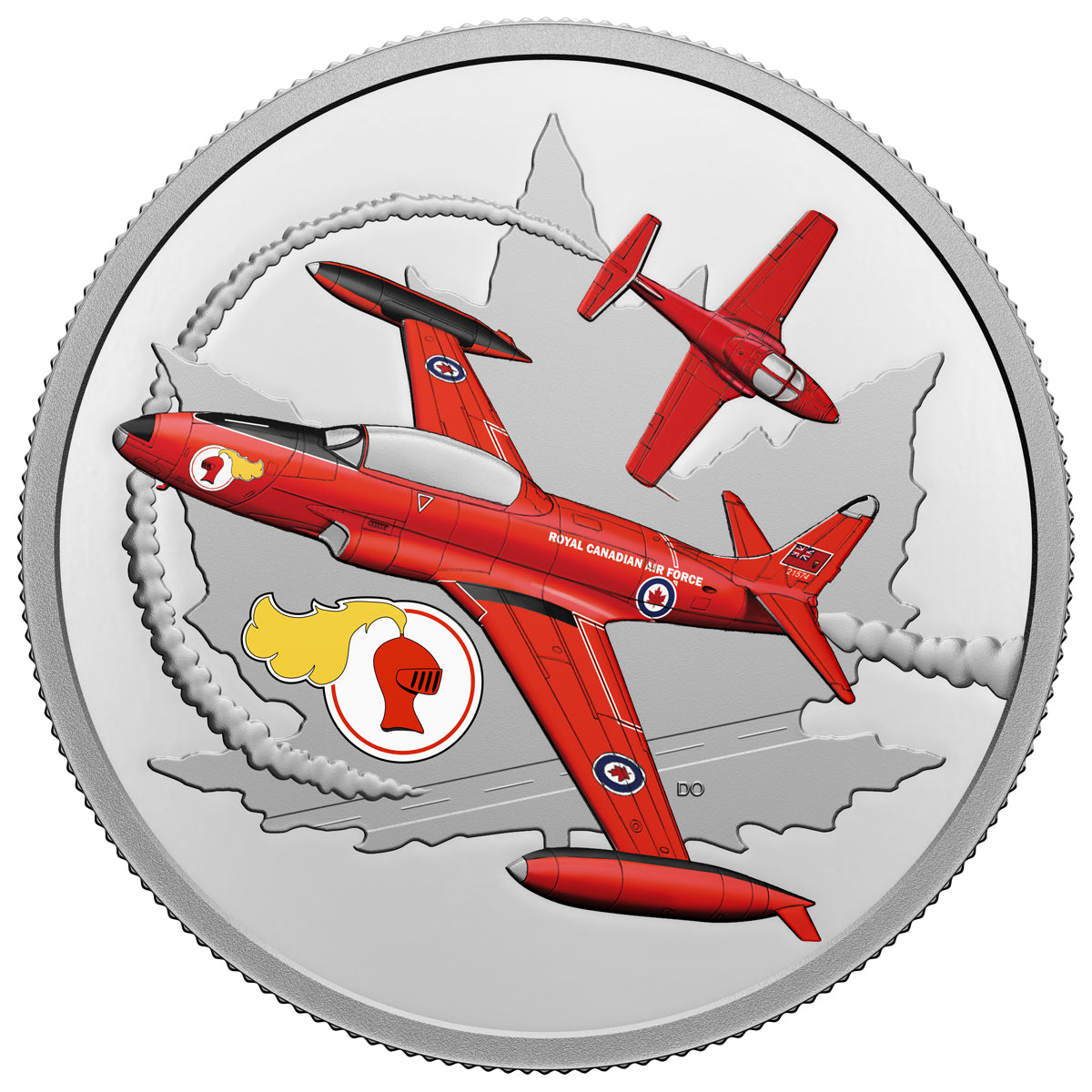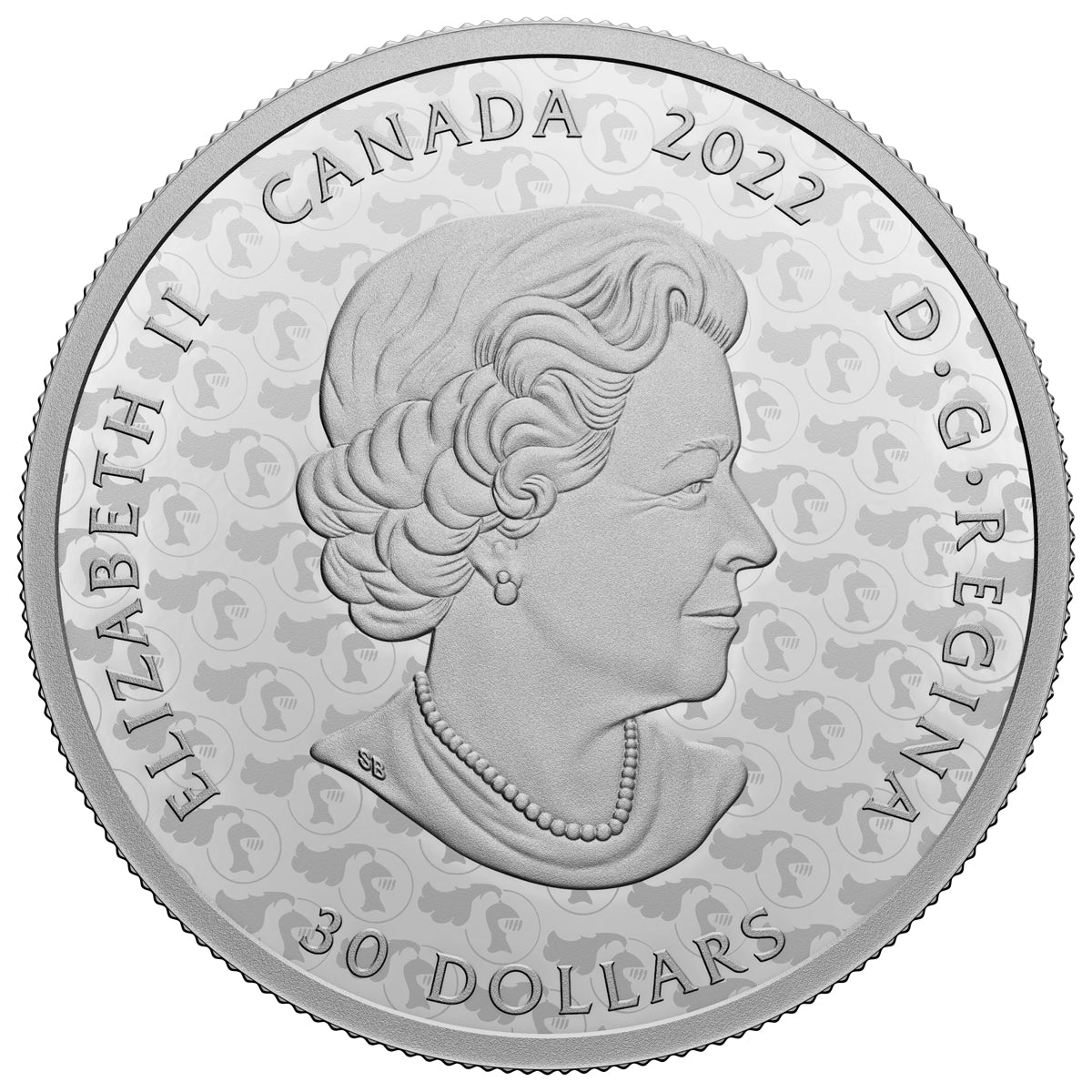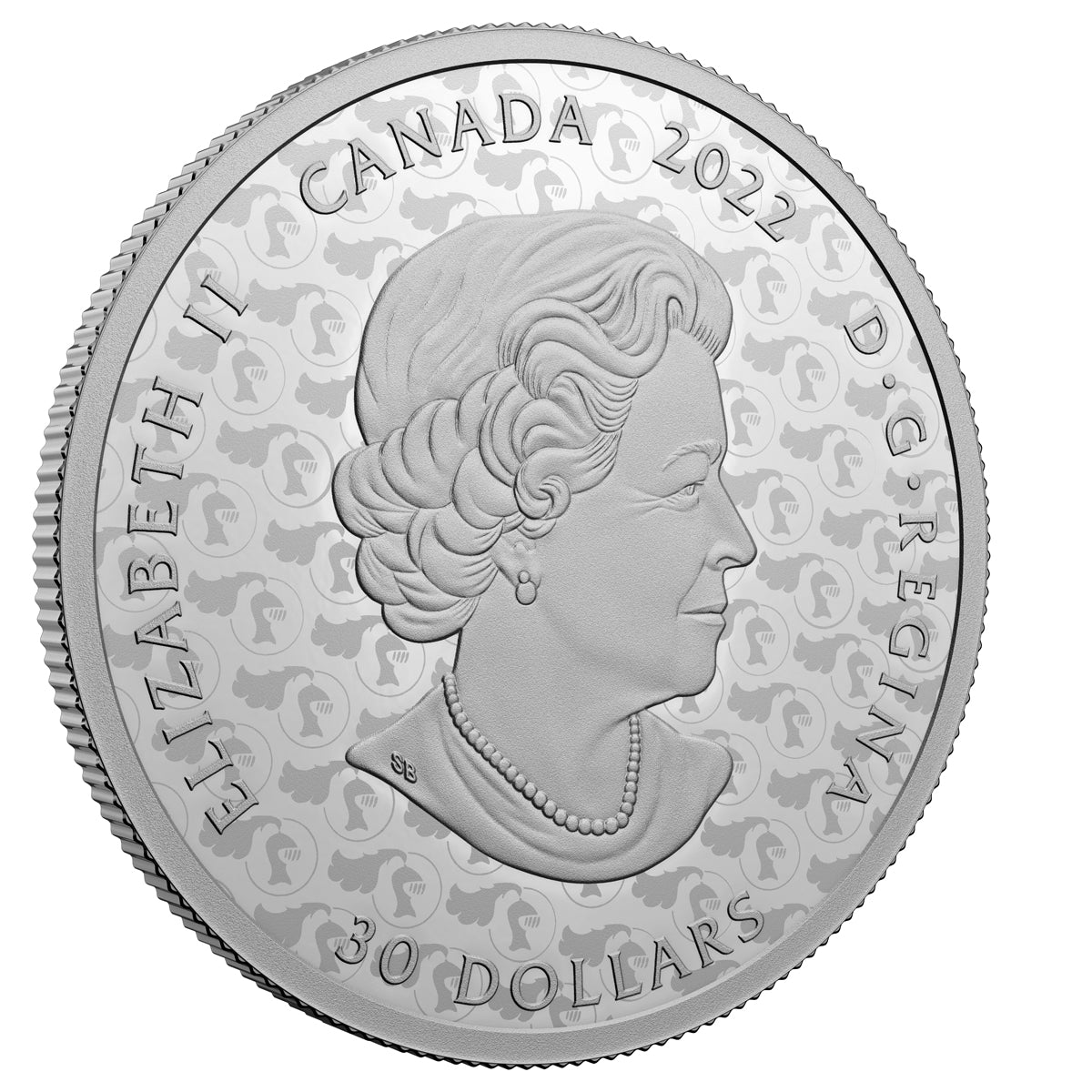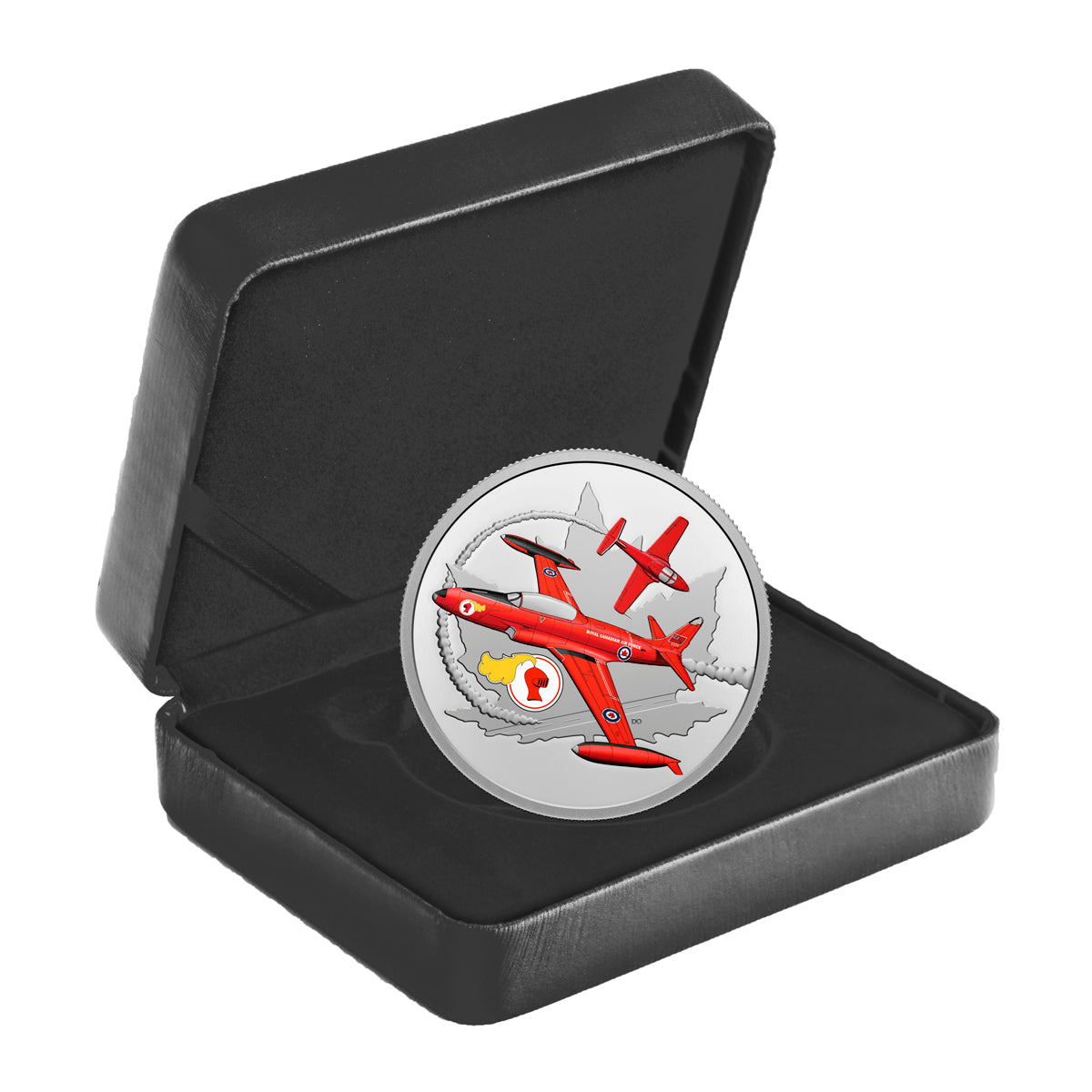Description
Before the Snowbirds, there was the Red Knight, featured on this 2022 $30 fine silver coin. From 1958 until 1969, the Red Knight delighted spectators with awe-inspiring aerobatic displays in the sky over Canada and the United States. The Royal Canadian Air Force’s (RCAF) solo jet-aerobatic performer was equipped with the T-33 Silver Star (or “T-Bird”, CT-133) and later, the CT-114 Tutor, which were decked out in an iconic bright red colour scheme. These aircraft, along with the distinctive knight’s helmet emblem they bore, have been colourfully recreated on this tribute to the legendary (and much loved) Red Knight, whose show-stopping manoeuvres inspired a generation of air enthusiasts and enriched Canada’s aviation heritage.
The Red Knight Canadair T-33 Silver Star is shown performing a manoeuvre alongside its eventual replacement, the Canadair CT-114 Tutor (in the background). Accompanied by the red, gold and white Red Knight emblem, both aircraft are painted in their distinctive red colour schemes of the 1960s and set against the RCAF Roundel’s (pre-1965) maple leaf. The obverse features the repeating laser-engraved Red Knight emblem and the effigy of Her Majesty Queen Elizabeth II by Susanna Blunt.
A forerunner of the Canadian Forces Snowbirds, the Red Knight originated in Trenton, Ontario, and was active from 1958 to 1969. Although it was originally authorized to perform in just three air shows, the Royal Canadian Air Force Training Command’s solo aerobatic performer proved to be a hit with spectators and went on to make more than 600 air show appearances throughout its 12-year run. Its ability to perform manoeuvres within the confines of an airfield made it well suited for air shows in small communities and venues that could not accommodate larger display teams.
For the first three years, the Red Knight consisted of a single aircraft, a pilot and a support technician. Ultimately, a total of 17 pilots and two aircraft types—the T-33 from 1958 to mid-1968 and the Tutor in 1968 and 1969—took up the mantle of the Red Knight. The base of operations moved to RCAF Station Saskatoon in 1959, RCAF Station Portage la Prairie in 1961 and RCAF Station Moose Jaw in 1964 before returning to CFB Portage la Prairie in 1967. At the end of that air show season, the Red Knight was awarded the Centennial Medal for its “valuable service to the nation” after completing more than 100 performances, including flypasts and air shows alongside the Canadian Armed Forces Golden Centennaires during Expo 67.
Budget cuts and a fatal accident resulted in the program’s untimely cancellation in early 1970. But the Red Knight will always hold a special place in Canadian aviation history as a prolific performer and one of the longest-running military aerobatic displays—in fact, its total number of performances is third only to today’s Snowbirds and CF-18 solo aerobatic displays which have been ongoing since 1971 and 1983 respectively.








